Shortbread Cookie Recipe (Easy Recipe from Scotland)
This shortbread cookie recipe is directly from Scotland. You can be sure it’s authentic; and if you follow all my tips, you’ll have the best tasting Scottish shortbread, ever! (And I’ll tell you why it’s truly not even a cookie!)
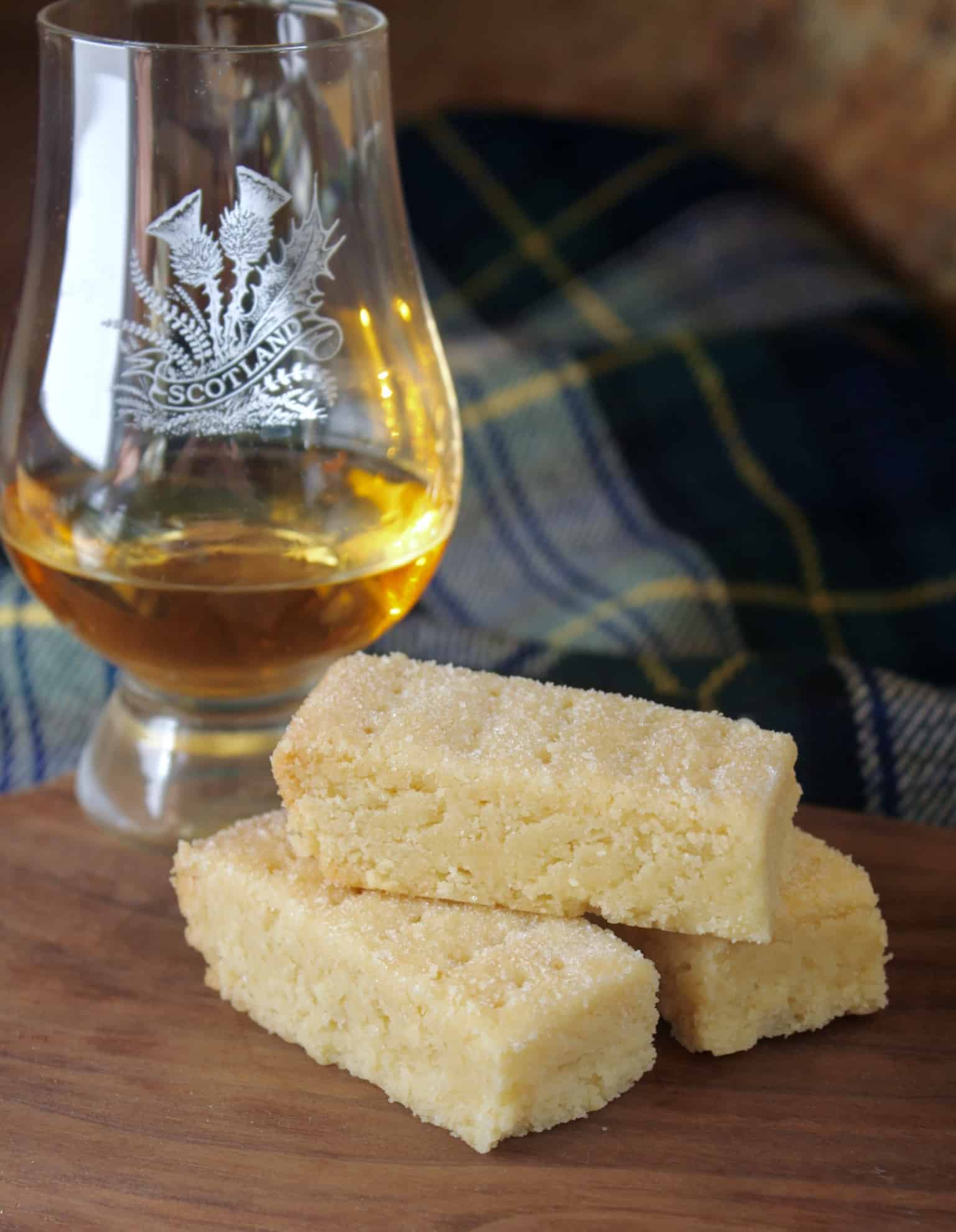
In September of 2014, I flew to Scotland to be a judge in a cake baking competition.
As an Amazon Associate I earn from qualifying purchases
I wrote about my impending participation, and added this shortbread cookie recipe at the end. You can click the “jump to recipe” button or simply scroll down for it.
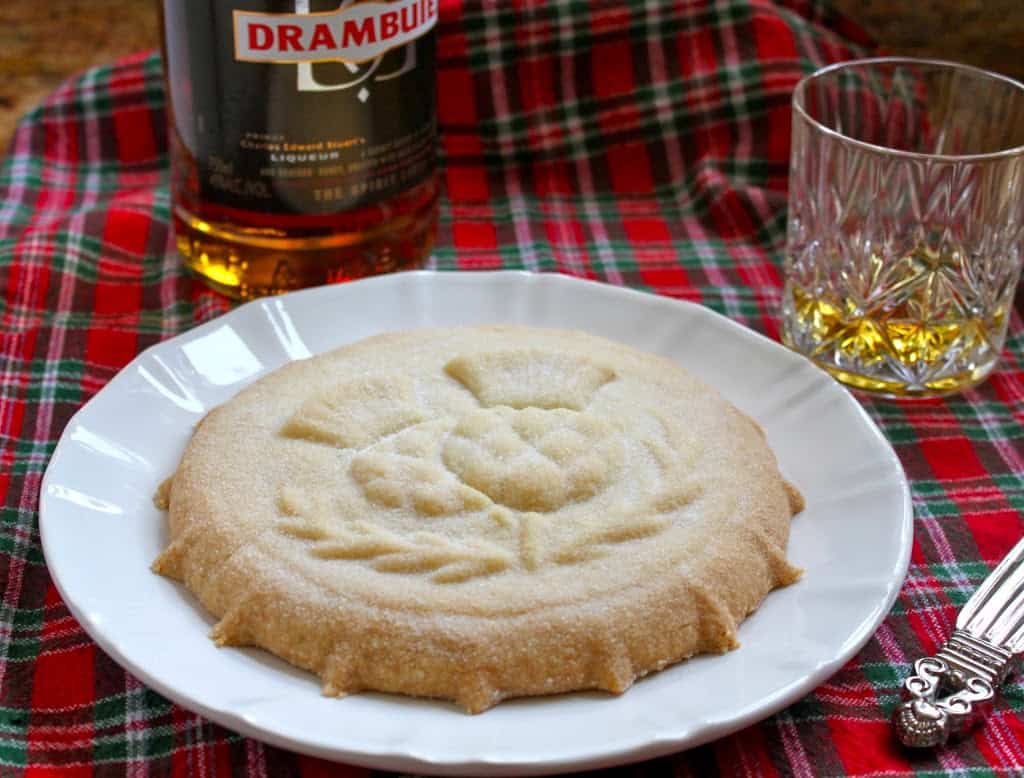
WARNING: beware of which Scottish recipes you find on the internet. Some sites with Scottish names are simply NOT Scottish at all. 🥲
Why am I calling it a Shortbread Cookie Recipe?
The first thing I have to tell you is that it pains me to call shortbread a “cookie”. Any Scot would agree with me, because it’s simply in a class by itself. It’s always referred to as just plain “shortbread” or classified as biscuits in Scotland, as well of the rest of the UK. Shortbread fingers are most traditional shape, but I’d hazard a guess that the shortbread made in moulds goes back even further in history. And before I go any further…
Is Shortbread Scottish or Irish?
There is NO question that shortbread biscuits are SCOTTISH.
Also, if you care for my explanation on why I’m calling this a shortbread “cookie” recipe, you can read my explanation at the bottom of this post. Trust me, there’s a good reason (but it kills me)!
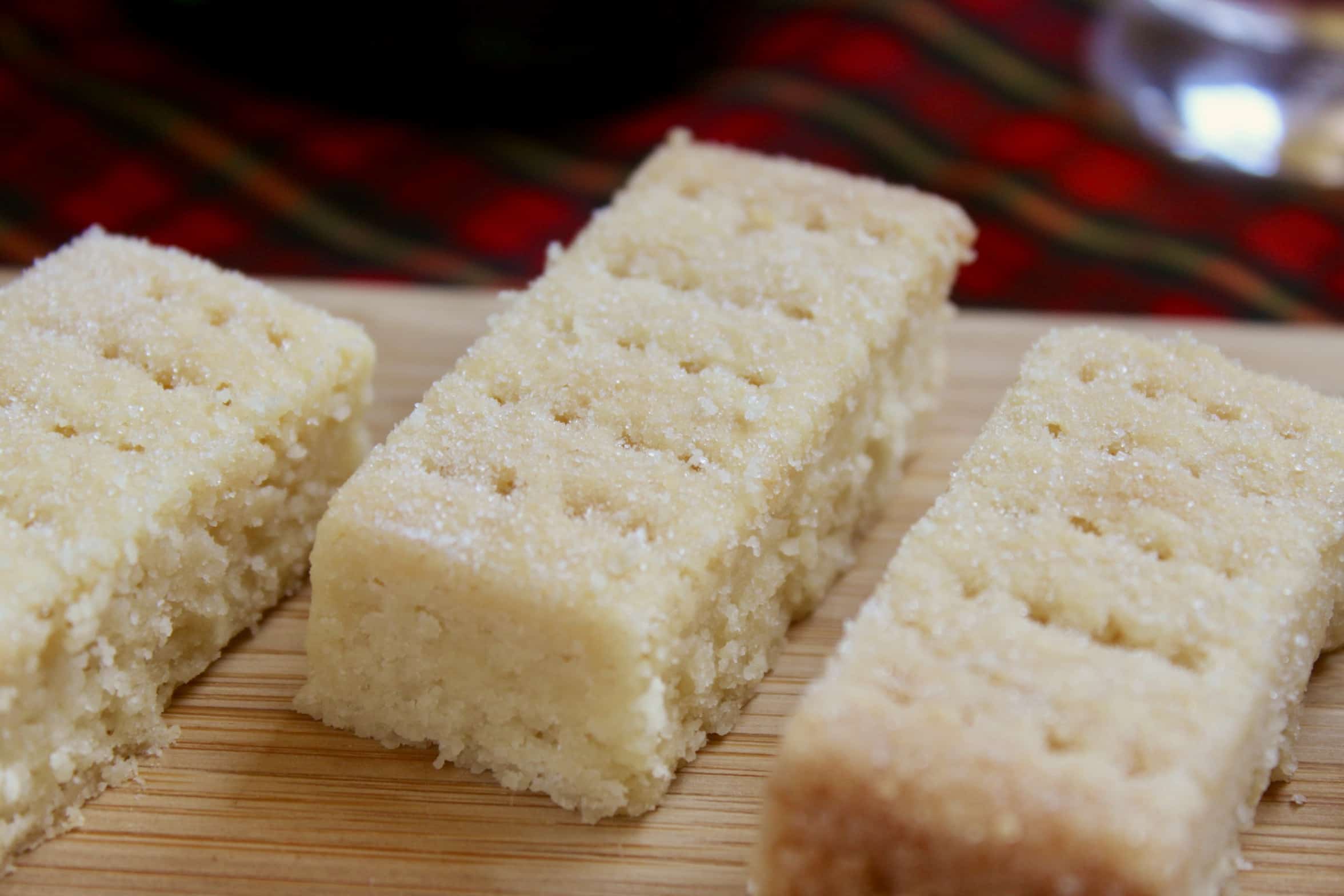
Why is Scotland famous for Shortbread?
The main reason Scotland is famous for shortbread is because that’s where it was invented. Although the first recipe was a “medieval biscuit bread”, it morphed into its current buttery recipe later on in history. Scotland is also known for making the best shortbread.
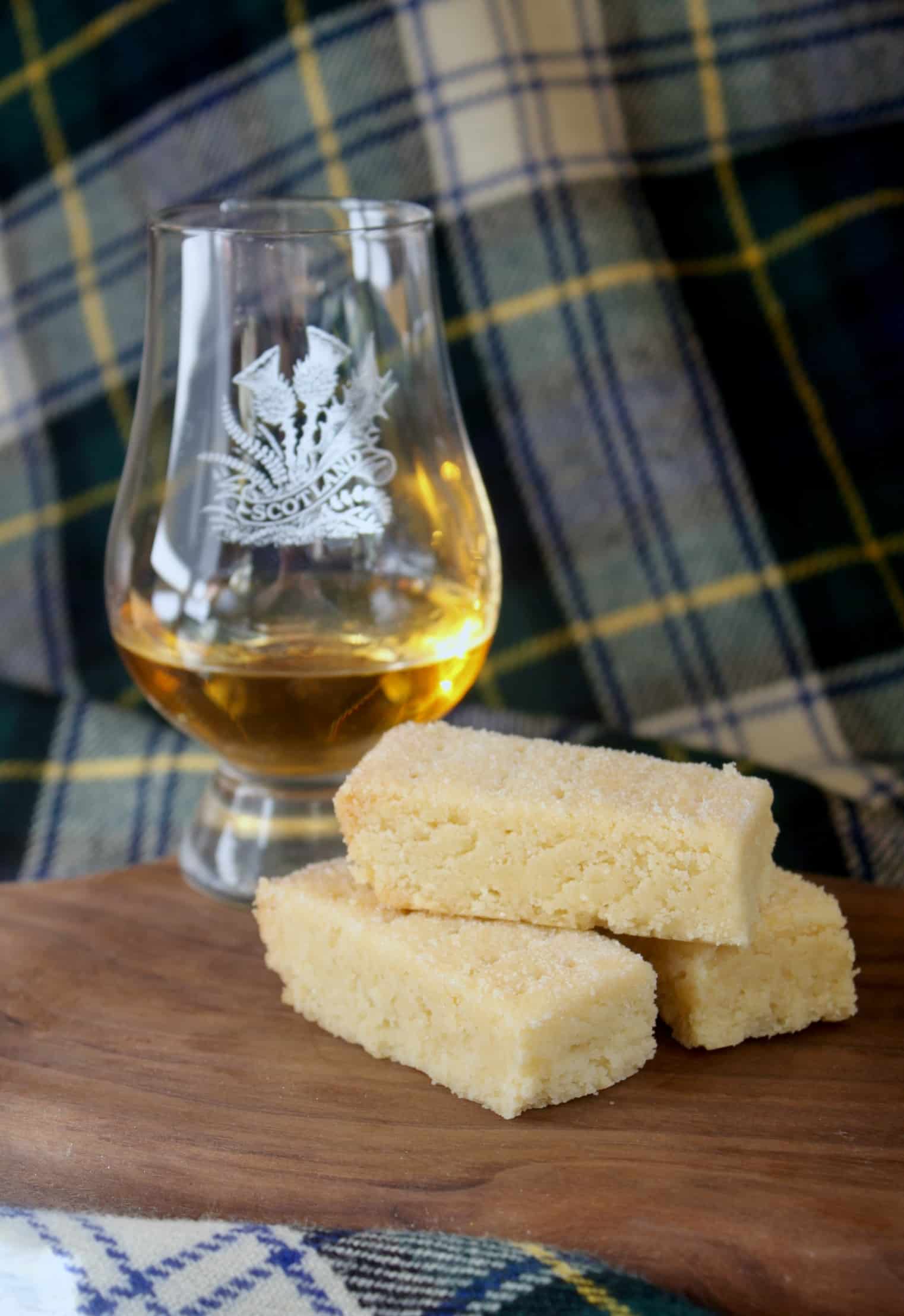
Shortbread is also a tradition for Hogmanay, or New Year’s Eve, in Scotland. It’s coming up, so why not make a double batch for Christmas and New Year’s Eve? It’s a great way to start the new year, with some Scotch whisky! (FYI: Scotch whisky is always spelled without an “e”.)
Heard of sticky toffee pudding? This recipe is phenomenal, just read the reviews!
Why do They call it Shortbread?
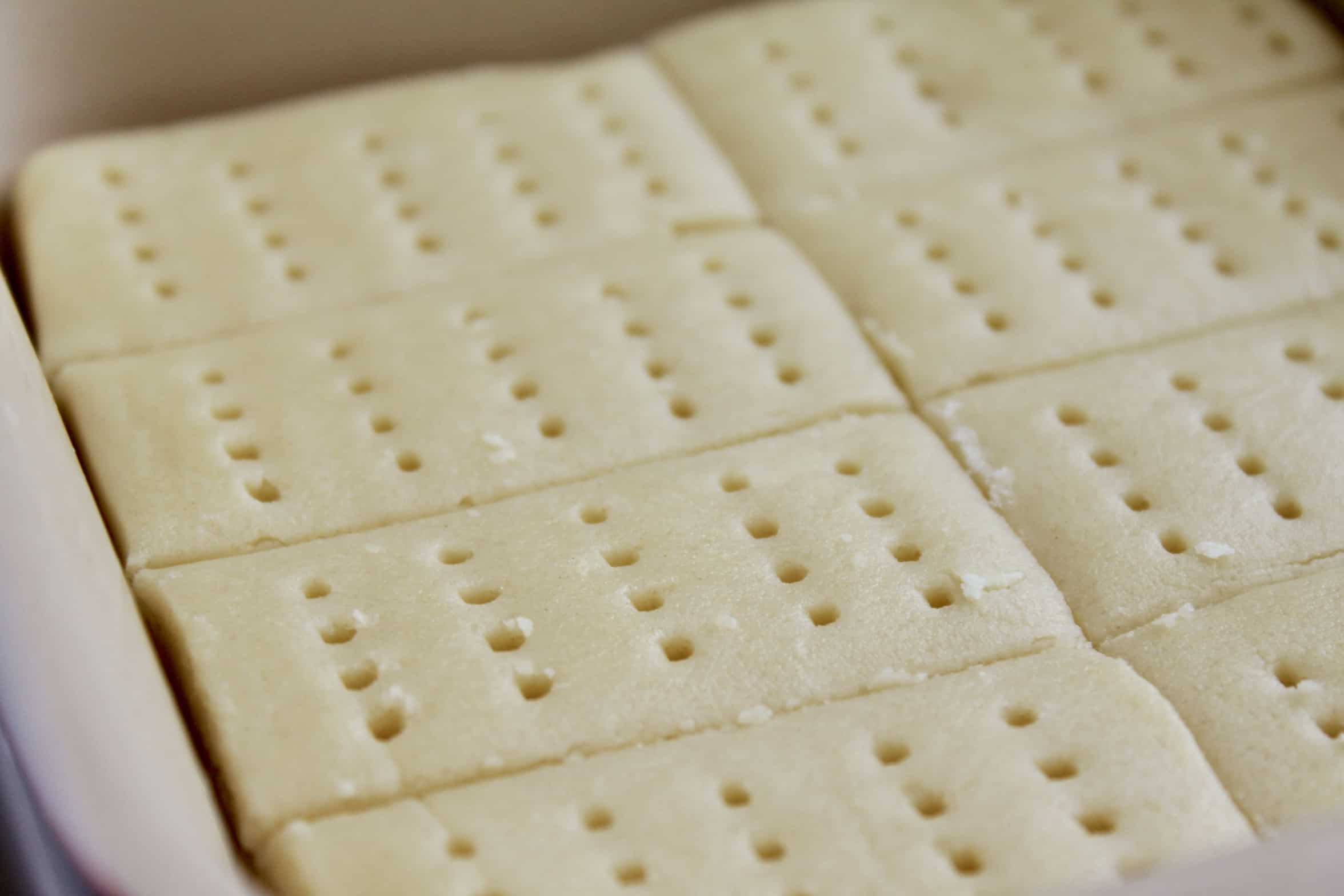
A very long time ago, biscuits were made from leftover baked goods which were repurposed into another form. You may remember I explained that “biscotti” means “cooked twice” in Italian, which is where the word, “biscuit” comes from. When butter began being added, these biscuits were no longer cooked twice, but the name remained.
Try this classic Scottish Empire biscuit recipe, too!
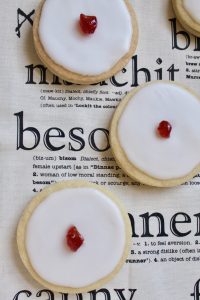
What’s the Ingredients for Shortbread?
Shortbread ingredients are simply flour, butter and sugar. Only these three ingredients are needed.
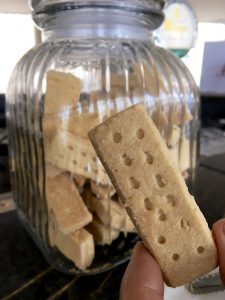
What is the Difference Between Butter Cookies and Shortbread?
I have to explain the difference because another site claims that butter cookies are better than shortbread! I had to take a moment to compose myself after reading that. Despite that fact that there are so many types of butter cookies/biscuits, including some fabulous French ones, I can guarantee that this person has never had good shortbread!
Be sure to have shortbread on hand for Burns Night (January 25th)
Of course, taste and opinions are both subjective, however, a butter cookie usually has other ingredients and isn’t as plain and simple as this shortbread cookie recipe. Shortbread, and shortcrust pastry are just as they sound–they don’t have eggs and other binders, so the result is a short, crumbly texture. When you put a good shortbread biscuit in your mouth, it’s a crumbly, buttery, sweet bite of goodness!
Another difference between butter cookies and shortbread would be the quality of ingredients (however, it works both ways) so please read on as I cover that next. Just read a few reviews left by readers who tried this recipe:
- “Hi Christina. Just made this recipe this morning. I am a huge fan of shortbread. I have to say this is the absolute best I have ever had and will only make this from now on. Thank you so much for the recipe. I adore your site.” -Susan
- “So delicious. My husband loves the fingers. Making another batch 5 days after the 1st batch. And it’s so easy!” -Cathy
- “This was my first ever shortbread, In many things, but definitely not a cook or a baker. This is easy and perfectly yummy recipe. Thank you!” -Aga
What makes a Good Shortbread?
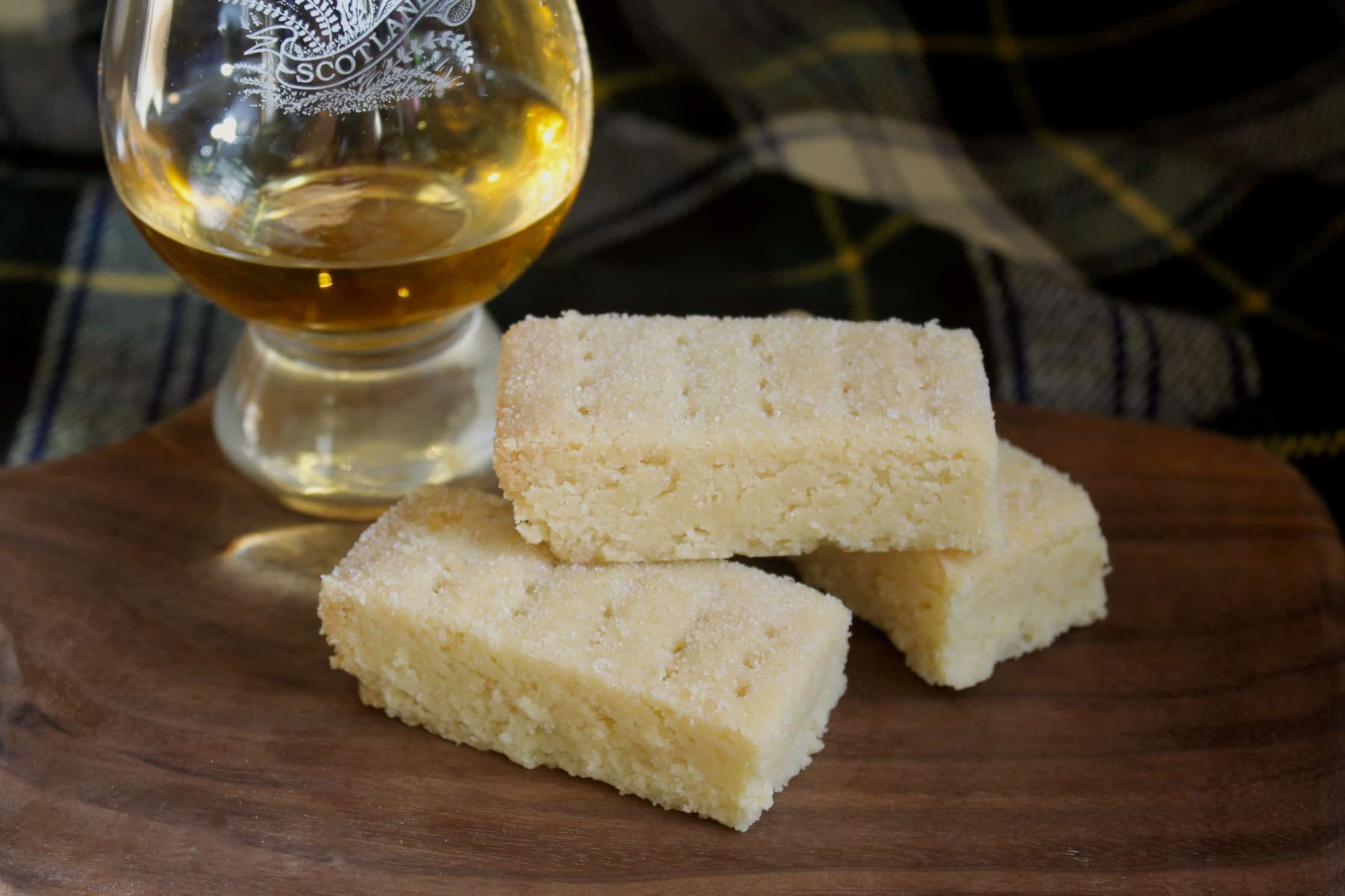
A good shortbread comes from two things: the very best ingredients, and a proper recipe. You now have that recipe (which is the hardest part)! It is so difficult for me to see so many recipes floating around on the internet claiming to be “shortbread”. It’s also important to get the ingredients measured properly, and you can only do this with a scale. I highly recommend using a scale for shortbread that looks like what I’ve made in these pictures.
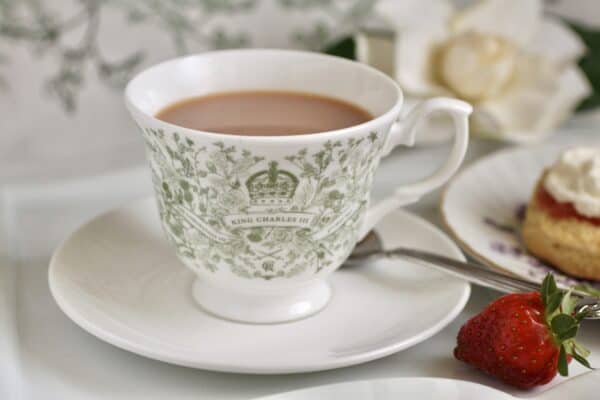
Shortbread Pairs Perfectly with Two Beverages: Tea and Whisky
Although I took photos with whisky, tea and shortbread is even more popular! You can’t really have whisky with your shortbread anytime, can you? Check out my how to make loose leaf tea post.
Why do you Prick Shortbread?
Much the same as pricking the base of a pie crust, potato scones and other baked goods, pricking shortbread with a fork ensures that the biscuits don’t bubble up and bake uniformly. It also gives it the classic pattern, for which shortbread is known.
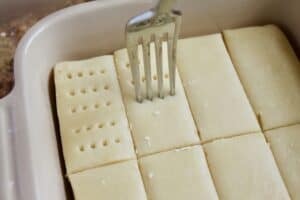
Shortbread History
When shortbread was first invented, it wasn’t the creation you and I are used to eating. It had yeast in it, was also made savory, and had lots of added ingredients. Here’s a recipe from Mrs. Frazer who wrote a cookbook in 18th century Scotland.
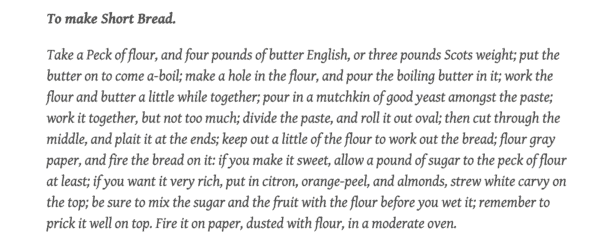
On the Shetland Islands, a cake made out of scone or shortbread dough would be broken on the head of a bride as she crossed the threshold of her new home! If it shattered into many small pieces, it would be considered good luck for a happy marriage. It was also good luck to find a piece of the cake on the floor! (As an aside, when I was a little girl I used to LOVE picking up the confetti (sugar coated almonds) on the ground after they’d been thrown at the bride and groom at Italian weddings.)
Is it Better to use Powdered Sugar or Granulated Sugar for Shortbread Cookies?
As a Scot, I can tell you that granulated or caster sugar should be used to make PROPER SCOTTISH SHORTBREAD. If you want an authentic biscuit, do not use powdered or confectioner’s sugar. You’ll also need granulated sugar to sprinkle on top of the finished product. No one ever dusts shortbread with powdered sugar.
Again, I would guess many people sharing other shortbread recipes have never even tasted proper shortbread (you don’t have to go to Scotland for that). Buy the best quality flour, cane sugar and most importantly, butter, to make the best biscuits you can make. You won’t be disappointed.
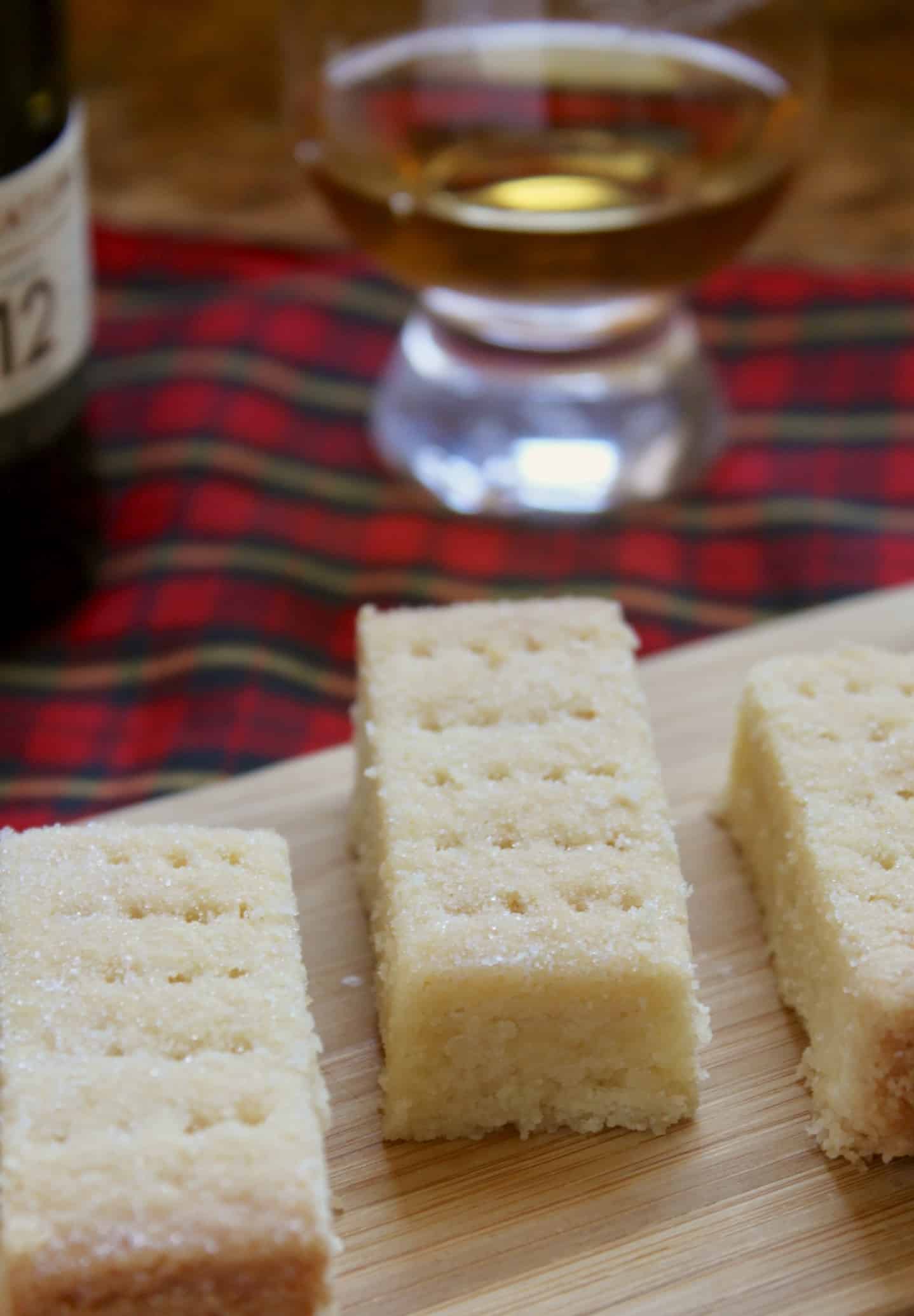
From 2014: I am incredibly honored and overjoyed to have been asked to be a judge in this year’s Scottish Baking Awards Competition, which will be held at Mar Hall Resort and Spa, near Glasgow, in September! As I was born in Scotland, it means so much to me to be able to participate as a judge in such a prestigious competition.

Regarding my trip to Scotland: maybe I can answer your questions, or it may inspire you to book a trip, remind you of someplace you’ve been. It’s possible that I’ll just make you want to run to your kitchen to bake up a Scottish cake or biscuits you just can’t wait to try! Please buy a scale if you don’t have one yet! Weighing the ingredients will insure excellent results. No one uses cups in Scotland.

Take a virtual trip to Scotland with me!
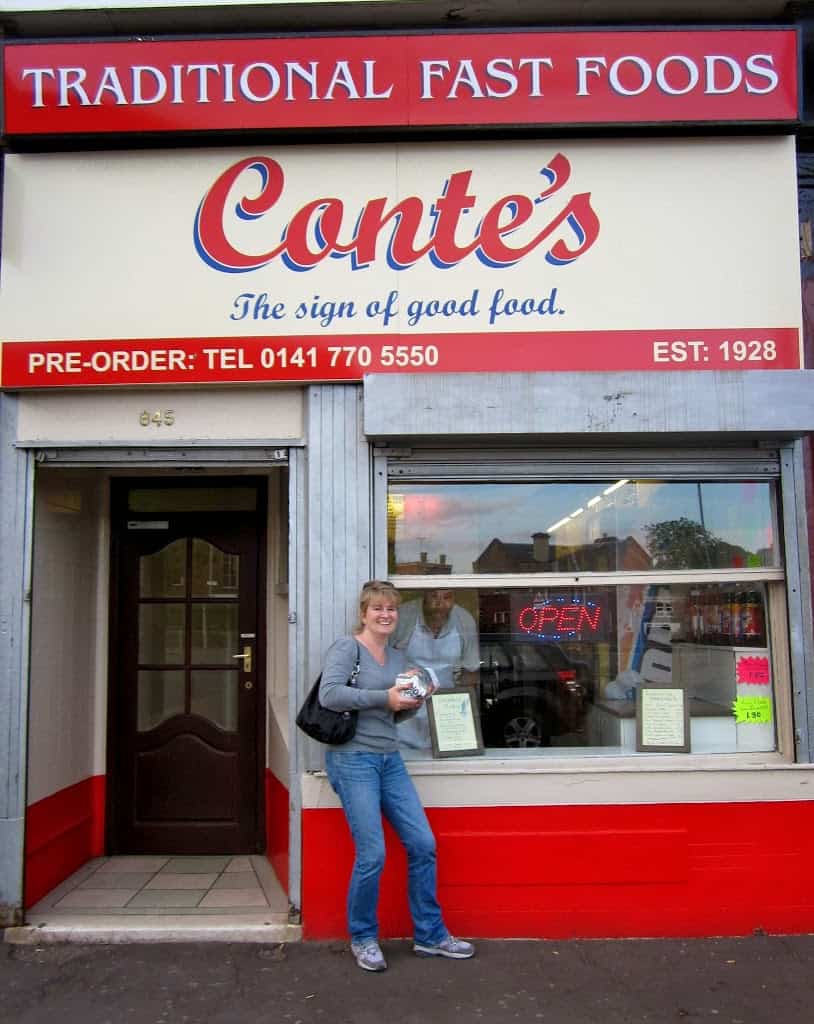
Another type of shortbread you can make: Millionaire’s Shortbread aka Caramel Shortcake
This shortbread cookie recipe is a fabulous start to make gifts for the holidays! To be honest, shortbread makes a great gift any time of year.
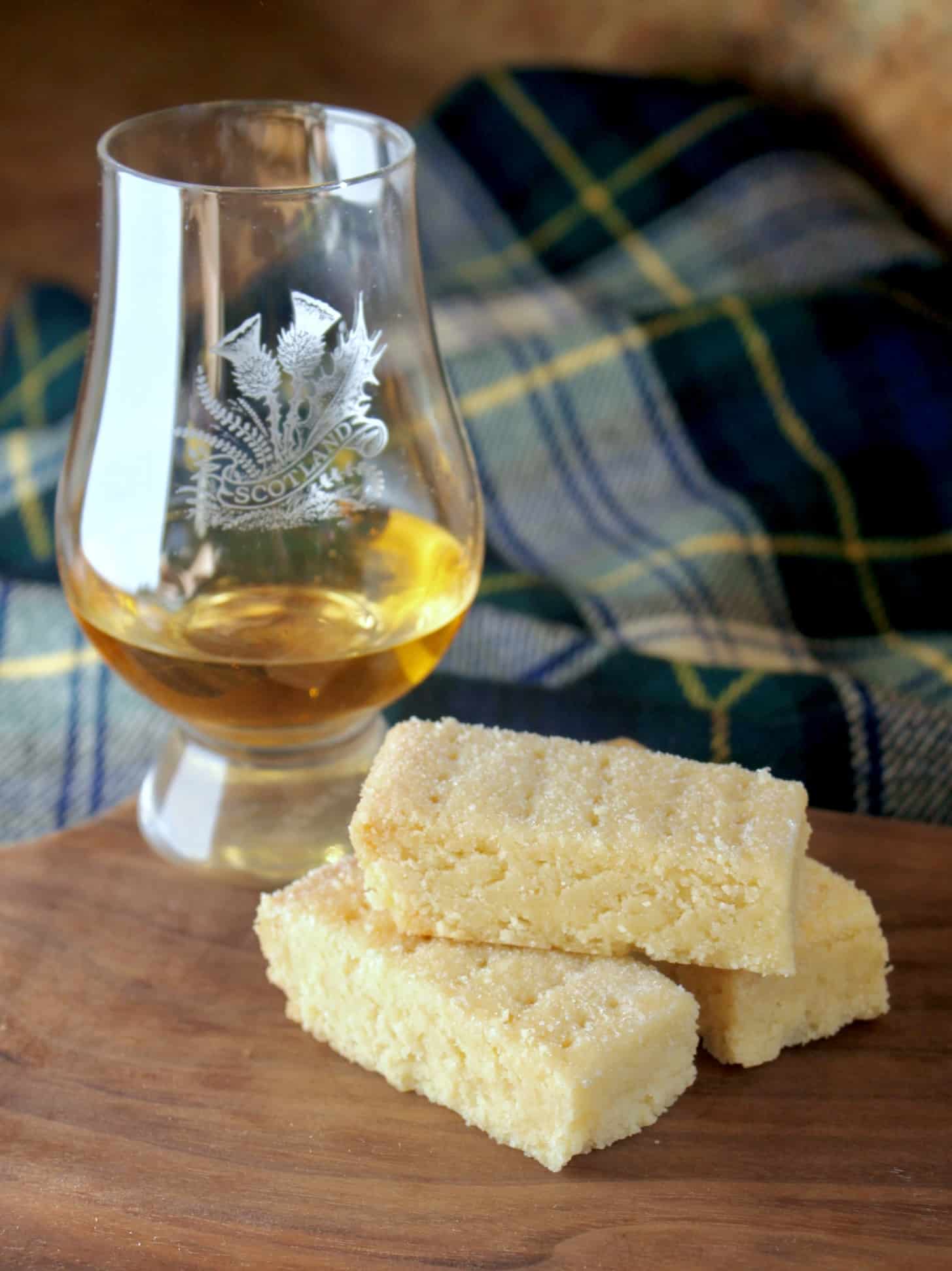
(The Best) Shortbread Cookie Recipe
recipe adapted from Lofty Peak (slightly adapted for US) make about 12-16 pieces depending on shape
PRINTABLE RECIPE BELOW
Ingredients
- butter
- sugar
- flour
Directions
Equipment: 8×8 pan or baking sheet.
Make the Shortbread Cookie Dough
Start by mixing the butter and sugar together, but DO NOT CREAM them. The butter shouldn’t be too soft, but also not straight from the fridge, especially if you use a mixer. These two ingredients should be thoroughly amalgamated, but not creamed.
Then add the flour and mix to a stiff consistency. Don’t overwork the dough; stop when it just comes together. That’s it, you’ve just made shortbread dough: I told you it was easy!
Form into a ball and place on a lightly flour dusted countertop, and roll out with a rolling pin into the shape of a pan or tin you want to bake them in.
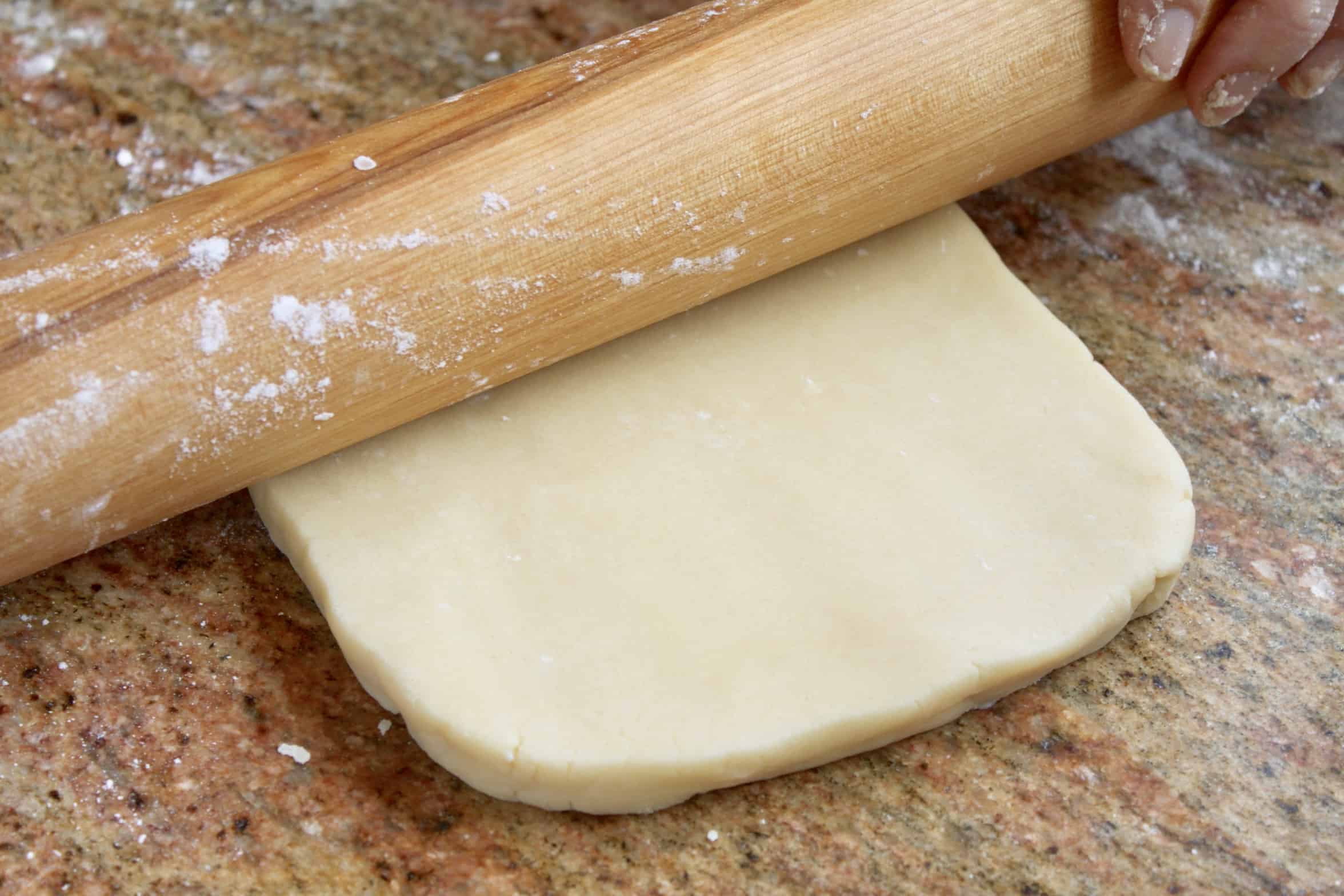
I baked this in an 8 x 8 pan. Trim the edges to the approximate size.
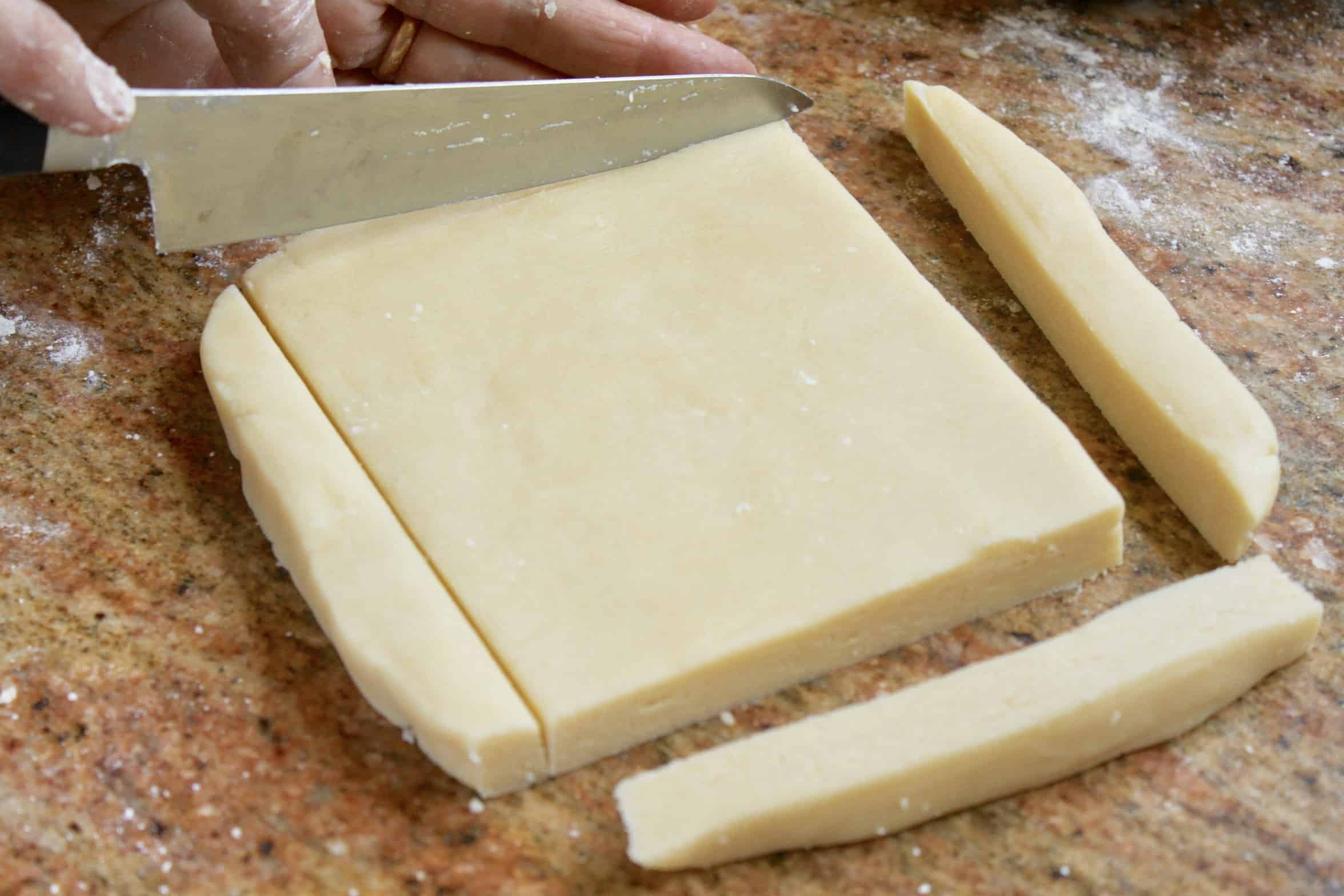
Next, place it in the pan of your choice. One mistake many people make is rolling the dough too thinly. Proper shortbread should be quite thick (no less than 3/4″ or 2cm if making fingers). Tip: make sure your fingers are wide enough that a fork can prick them. Use a bench scraper or knife to cut the dough into fingers.
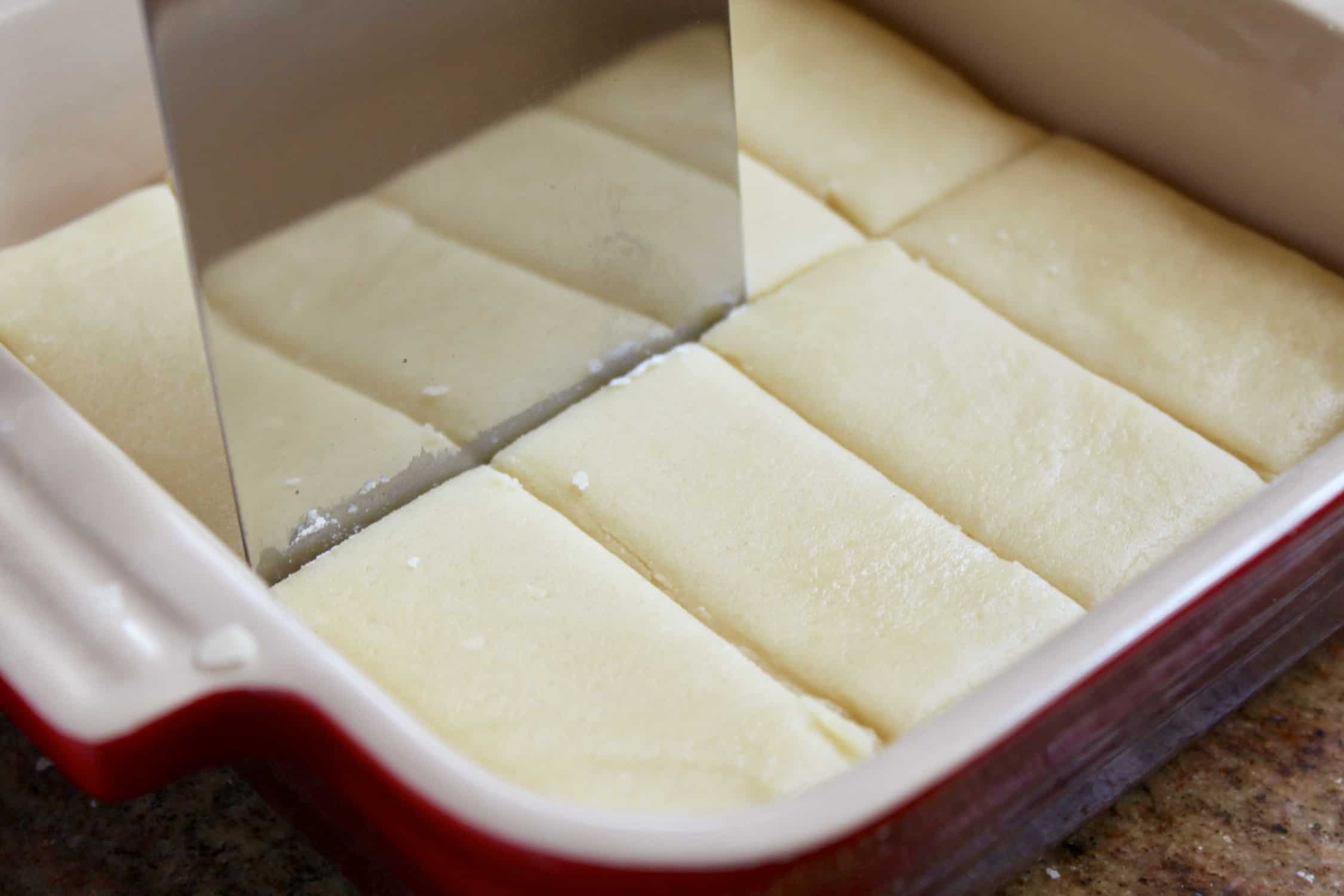
Then prick the shortbread with a fork, about half way through.
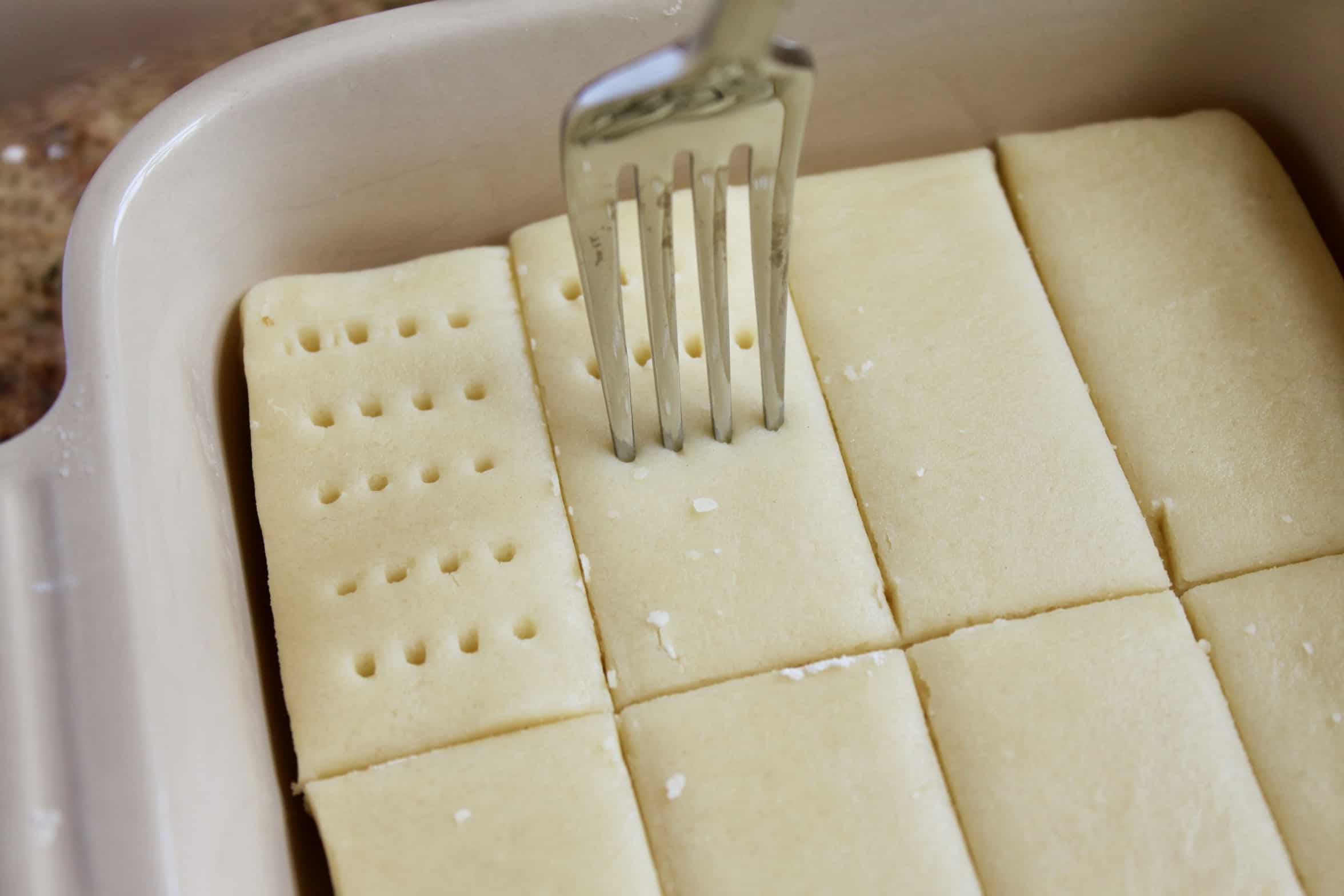
This gives the biscuits the authentic and iconic shortbread pattern.
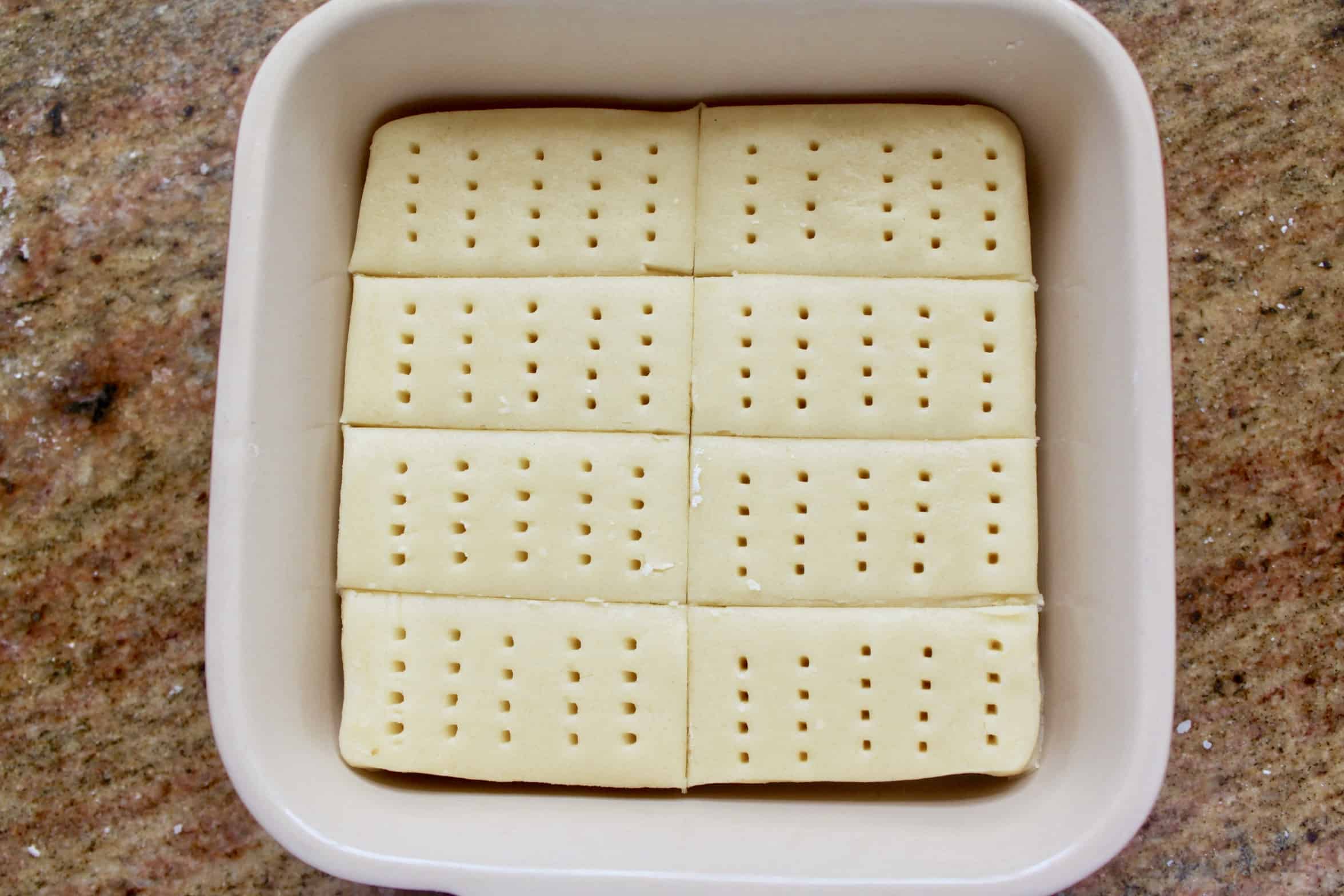
You can also shape the dough into a ball, roll it out into a round, and score into triangles, then prick with a fork. Unless it’s really hot in your kitchen, there’s no need to chill the dough.
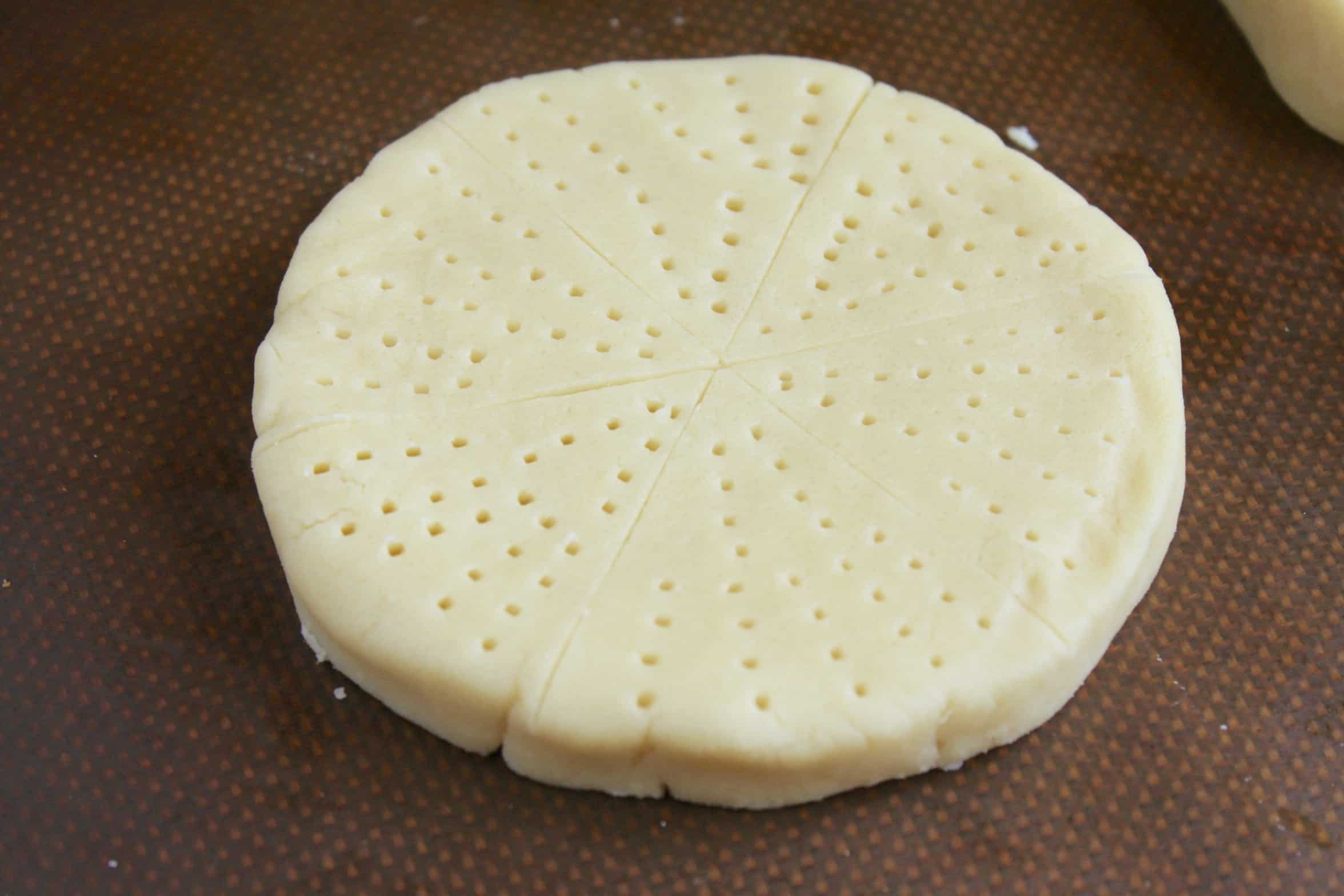
Here’s yet another option: a shortbread mold (brush the mold with a little oil, and sugar first to ensure it comes out nicely). I love all of these moulds as they have so many gorgeous designs AND they’re made in USA! Roll out the dough, place over the mould and roll with a rolling pin.
Remove the excess dough then turn out onto a tray. Isn’t it beautiful even before baking?
If your shortbread mould doesn’t have a pretty design, prick it with a fork.
Bake the Shortbread Cookies
Place in preheated oven for 25 to 30 minutes or until slightly brown on edges. Sprinkle with sugar immediately upon removing from the oven. Shortbread shouldn’t be darkly colored. Let your shortbread cool on or in the pan or tray before moving to rack to cool completely.

Store in a sealed container (an old Walker’s shortbread tin is excellent) and keep in a cool, dry place. Shortbread will keep well for weeks, but is also excellent after being frozen. If you plan to keep your shortbread for more than two weeks, I’d suggest freezing it.
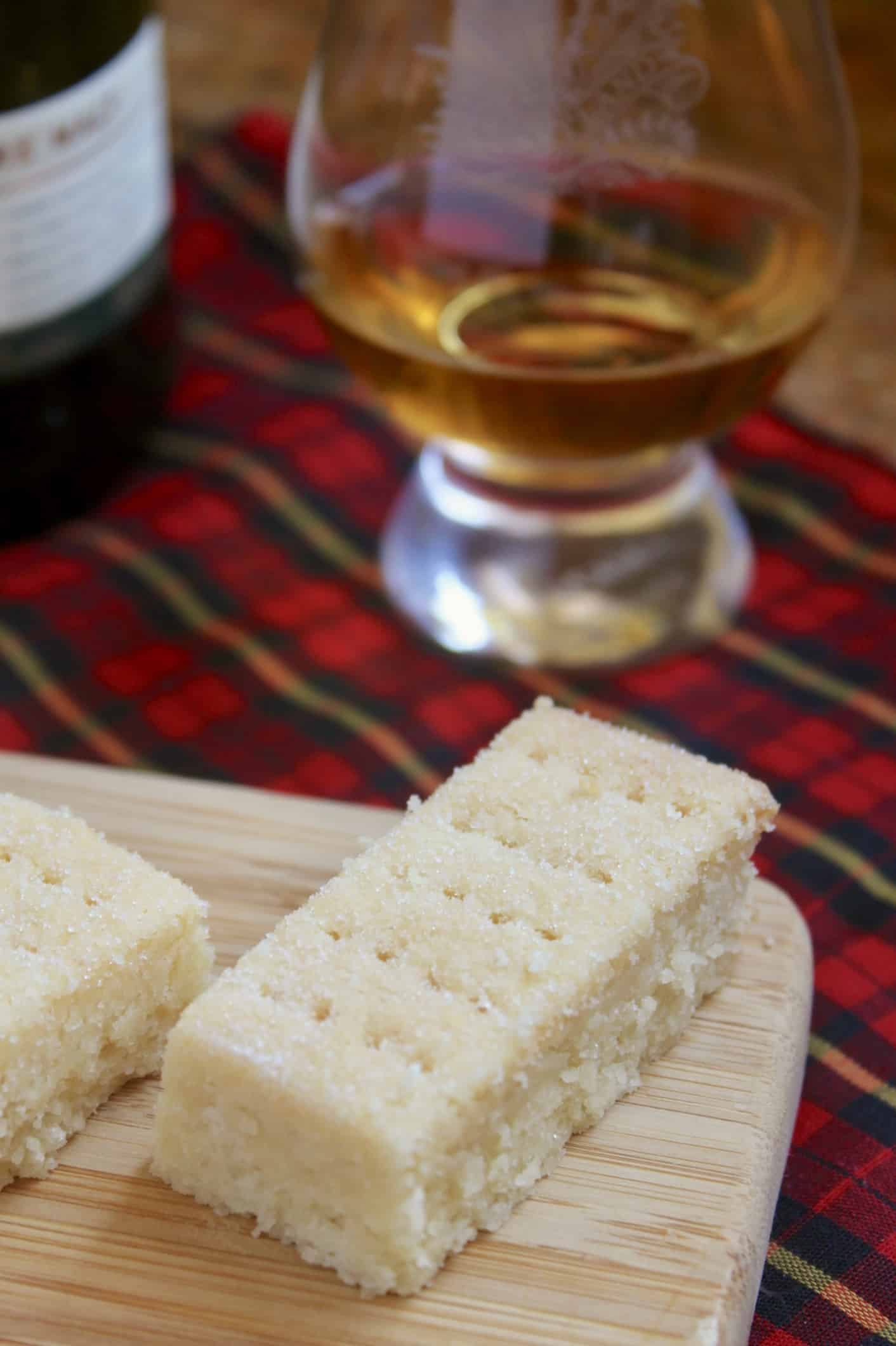
A proper shortbread cookie recipe is one of those things that makes you think of the old adage, “simple is best”.
I hope you enjoyed my shortbread cookie recipe and make it often!
If you like my cut crystal glasses. Here are some similar ones that I found. I love them because they are Italian-made Scotch glasses, like me! The scotch whisky glass was one I purchased in Scotland, but you can purchase the same brand (set of 4) without the Scotland emblem here. And here is a beautiful thistle shortbread mold. Have you noticed the thistle on my logo? That’s because I was born in Scotland!

How to Make Shortbread (Easy Scottish Recipe)
Ingredients
- 1 c butter salted, softened (you can use unsalted, which is the norm for baking, but add a good pinch of salt)
- 2 ½ c all-purpose flour
- ½ c sugar
- ½ tsp sugar to sprinkle on top
Instructions
- Heat oven to 375º F (190 ºC)
- Start by mixing the butter and sugar together, but DO NOT CREAM them (see notes). The butter shouldn't be too soft, but also not straight from the fridge, especially if you use a mixer.
- Add the flour and mix to a stiff consistency. Don't overwork the dough; stop when it just comes together. That's it, you've just made shortbread dough: I told you it was easy!
- Roll out into the shape of a pan or tin you want to bake them in. I baked this in an 8 x 8 pan. Trim the edges to the approximate size.
- FINGERS: Place it in the pan of your choice. One mistake many people make is rolling the shortbread too thin. Proper shortbread should be quite thick (no less than 3/4" or 2cm if making fingers). Tip: make sure your fingers are wide enough that a fork can prick them. Use a bench scraper or knife to cut the dough into fingers. Next, prick the shortbread with a fork, about half way through.
- ROUND: You can also shape the dough into a ball, roll it out into a round, and score into triangles, then prick with a fork.
- MOULD: (brush the mold with a little oil, and sugar first to ensure it comes out nicely). Roll out the dough, place over the mould and roll again to press into it. Remove the excess dough then turn out onto a tray. If your shortbread mould doesn't have a pretty design, prick it with a fork
- CUT OUT SHAPES: roll out more thinly (as with sugar cookies) and cut with cookie cutter. Place onto prepared baking sheet and prick evenly.
- Place in preheated oven for 15 to 30 minutes (depending on which thickness or shape) or until slightly brown on edges. Sprinkle with sugar immediately upon removing from the oven. Shortbread shouldn't be darkly colored. Let your shortbread cool on or in the pan or tray before moving to rack to cool completely.
Video
Notes
- Quality ingredients are KEY, especially the butter.
- The butter and sugar should be thoroughly amalgamated, but not creamed (as when making a cake and the result becomes light and fluffy-shortbread dough takes only a few minutes to make.)
- PLEASE USE A SCALE FOR BEST RESULTS.
- If for some reason your mixture doesn't come together, press it into a pan or use to make a crumble topping - there is no reason to throw it away.
- Store in a sealed container (an old Walker's tin is excellent) and keep in a cool, dry place. Shortbread will keep well for weeks, but is also excellent after being frozen.
- If you plan to keep your shortbread for more than two weeks, I'd suggest freezing it.
Nutrition
LA Living…

Don’t miss another post! Sign up for my free subscription below,
For those of you who are interested in why I chose to use the term “shortbread cookie recipe” instead of just “shortbread recipe”. It’s simple, there are so many Americans searching for a this type of recipe every day. If I use the term “shortbread” on its own, this recipe will be lost, probably somewhere on page 326 of Google.
I truly and honestly want to share this authentic and traditional Scottish shortbread cookie recipe (see I did it again!) with as many people as possible. This is the best way for me to achieve that goal, so I’d rather use the term cookie in my post so that I can save more people from the inauthentic recipes out there. (For those of you who know about SEO, it’s all about that.)



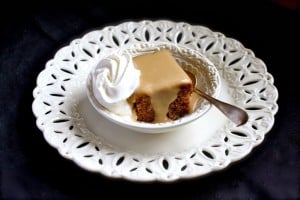

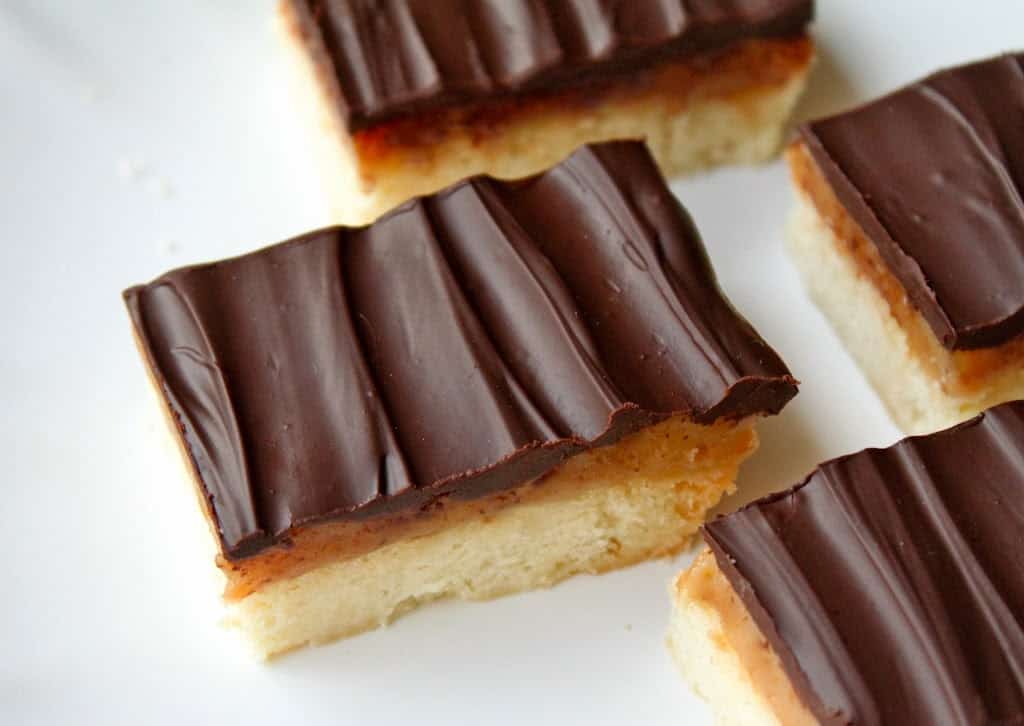
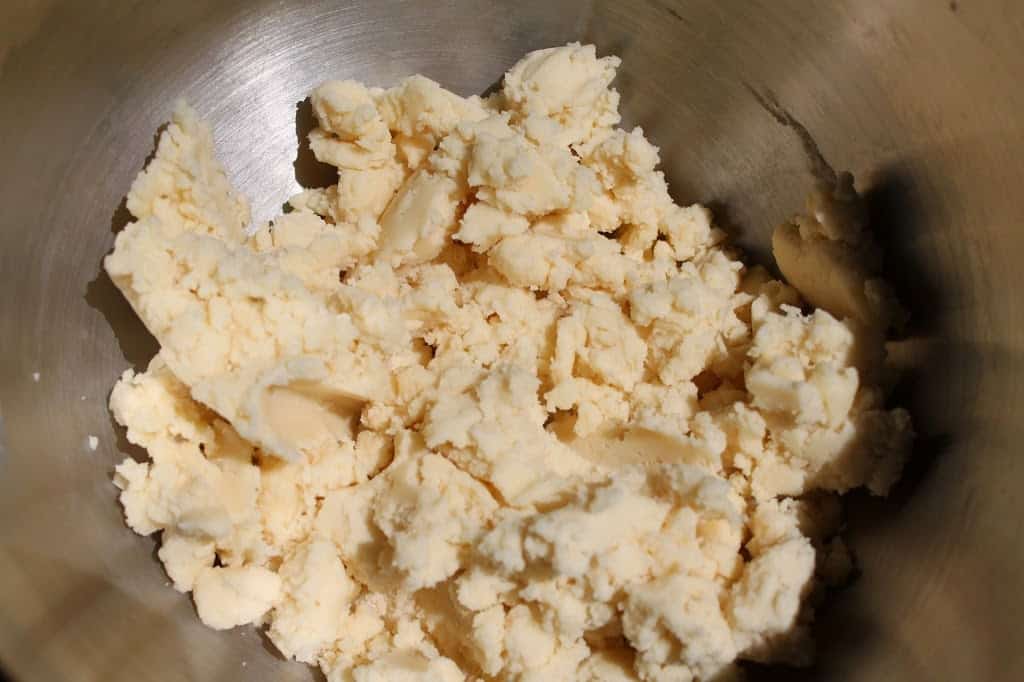

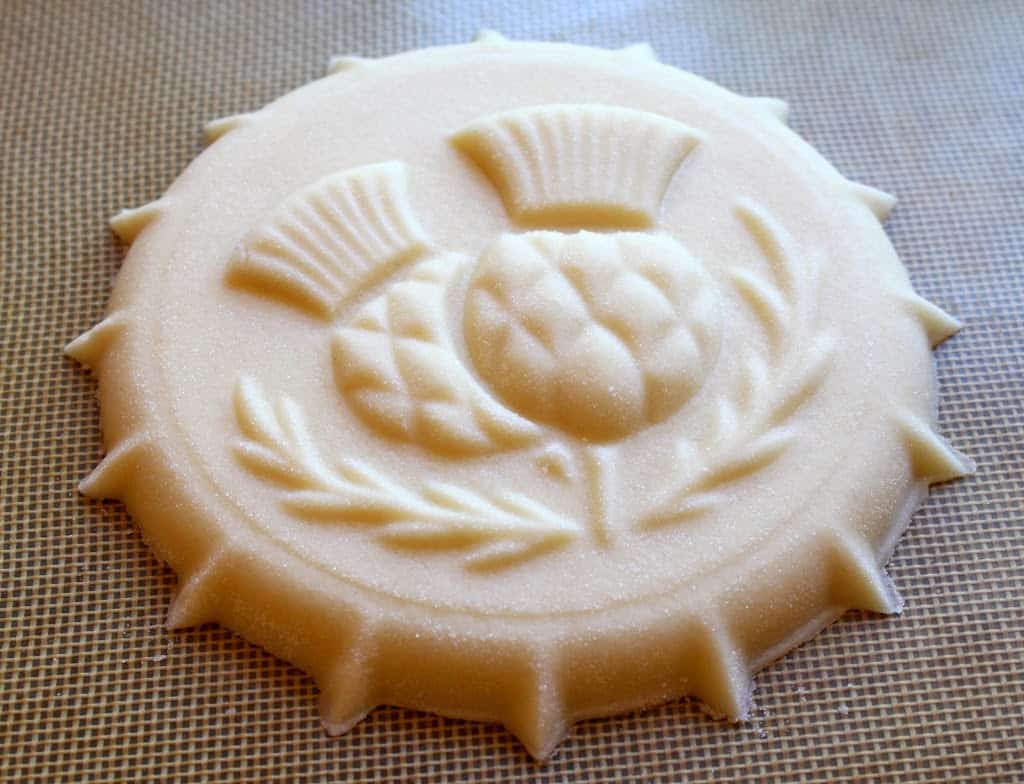
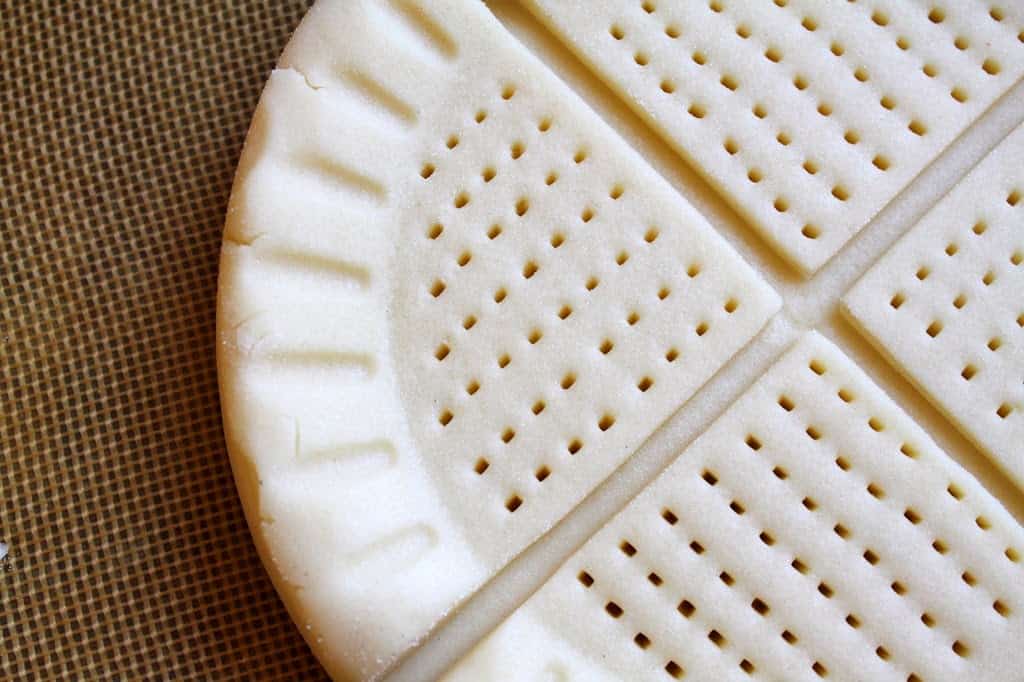
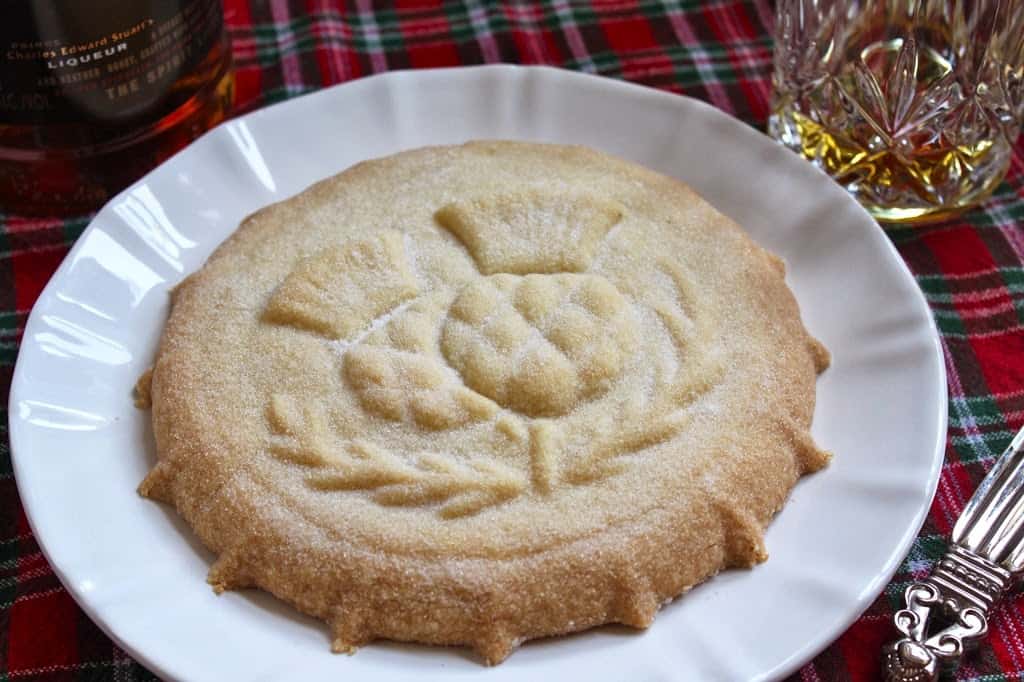
this is the best recipe for me at 13 years old this is so simple and easy I love it. thanks for this recipe.
I do a lot of baking and I have to say these are the best shortbread I’ve had. Simple and delicious. Thank you for sharing.
This sounds amazing! I love authentic recipes, and getting one straight from Scotland makes it even better. Can’t wait to try it out — and now I’m super curious why it’s not technically a cookie. Definitely bookmarking
I love the shortbread so much ! And it packs up for mailing so well .
“A dozen cookies “
I love to try new shortbread recipes, and this one did not disappoint! I was also glad to see it made more than “a dozen cookies”!
That was smooth, Gina! ;)
I loved it!! Would also recommend adding a teaspoon of vanilla for even better taste :)
Happy you liked it, Alo! You can add vanilla, but then it’s vanilla shortbread. Traditional shortbread is plain :)
Hi Christina,
My grandson’s new wife asked me to make some shortbread to bring to Easter dinner on Sunday. How could I refuse? I don’t make shortbread too often but when I do, I just make cookies.
I decided to look at your recipe and surprised when the measurements were in cups and yet in the recipe you mention to use a scale for best results. I always use a scale so I will just work out the weight before I start. I never have a problem with your recipes so I will give it a go. Happy Easter to you and yours.🇨🇦🇨🇦
Oh no, you missed the METRIC button below the ingredients, Ina!! Just click on it and you’ll see the weights! I will try to email you and hope to catch you before you try converting!
Made this for my mother in law’s birthday. Her mom was from Scotland and so my mom learned to make these shortbread from her mom. The only difference is she uses brown sugar and they are about 1/4” thick. These cookies came together well. I made sure to follow the video instructions. The dough was easy to use and I used a cookie stick cutter to cut before placing in the 8×8 pan. The cookies did expand so they baked together but still easy to slice apart. Overall the shortbread was delicious and very buttery (used Kerrygold unsalted). A small slice is enough to please. Thank you for sharing this recipe!
Happy birthday to your MIL! And thank you for the lovely review, I appreciate it and am happy you all enjoyed the shortbread, Lani!